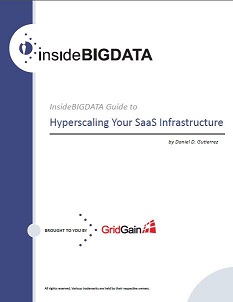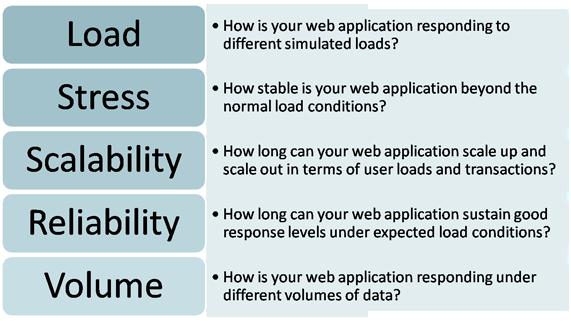This article is the fourth in an editorial series with a goal to provide direction for SaaS company thought leaders on ways to achieve higher levels of scalability and performance through use of in-memory computing technology.
In last week’s article, we discussed the benefits to SaaS companies when adopting an In-memory Data Fabric. The complete insideBIGDATA Guide to Hyperscaling Your SaaS Infrastructure is available for download from the insideBIGDATA White Paper Library.
Advantages of an In-Memory Data Fabric over Alternative Technologies
There are a number of choices available to a SaaS company that are designed to address expanded performance and scalability requirements, and it is important to carefully examine each option to ensure that the selected solution is going to provide a long-term path toward viability in a rapidly expanding customer adoption climate. Here is a short list of available alternatives:
- Application level caching.
- NoSQL (Not only SQL) solutions that are non-relational, distributed, open source, and horizontally scalable. Beginning in 2009, the data structures used by NoSQL databases (e.g. key-value, graph, or document) differ from those used in relational databases, making some operations faster with NoSQL. NoSQL databases are increasingly used in big data and real-time web applications.
- In-memory SQL databases are database management systems that primarily rely on main memory for data storage rather than a disk storage system. In-memory databases are faster than disk optimized databases since they eliminate the seek time when querying the data.
Even after considering the above technologies, SaaS vendors are wisely asking themselves what’s beyond the traditional relational database—and may arrive at the conclusion that they should use application level caching, or an in-memory database. However, a concrete understanding of the pros and cons is required.
Application level caching to improve performance is often deployed as a stop-gap measure before considering an option with more long ranging effects. Application performance and throughput can be improved in many ways by incorporating a caching strategy within the product. But ultimately, this is a limited approach and the issue of performance and scalability will need to be revisited at some point.
An important realization about the in-memory database route is that it requires replacing an existing enterprise-class relational database like Oracle or SQL Server—a challenging proposition indeed. Teams of DBAs would be out of work, resulting in significant pushback for such an initiative. The choice of new technology should
be the path of least resistance, but replacing an enterprise database is the path of “most” resistance.
An in-memory data fabric like GridGain’s allows the company to keep their database since it is a software layer that sits between the application and the existing database. Companies can keep their reporting tools and other tools, and they can also decouple the performance of the application from the performance level of those tools without having to replace them.
Other IMC vendors might have several different products that can be cobbled together. GridGain, on the other hand, has a single product with one set of APIs, one set of docs, and is just one vendor relationship to manage. GridGain offers one integrated solution that allows the vendor’s application to pull data in memory for faster access, be able to do compute in a distributed fashion against the data, and do SQL queries across diverse data sets including structured, semi-structured and unstructured data.
If you prefer, the complete insideBIGDATA Guide to Hyperscaling Your SaaS Infrastructure is available for download in PDF from the insideBIGDATA White Paper Library, courtesy of GridGain.






Interesting article. Your readers might also find real user reviews for Oracle Database In-Memory on IT Central Station to be helpful. As an example, this Strategic Solutions Architect writes that with in-memory database software, “because it’s in a columnar format instead of a row major format, you can access the data much more quickly, especially if you have a very wide table because you can eliminate a lot of the intervening columns.” You can read the rest of his review here: https://goo.gl/jLiLWx.